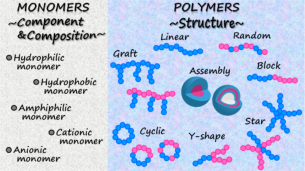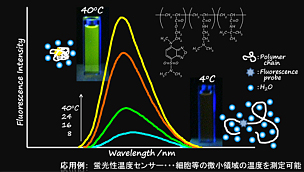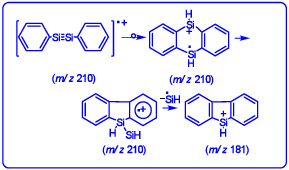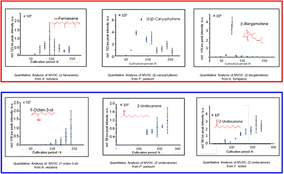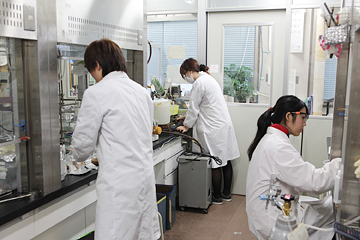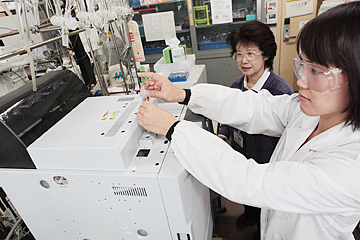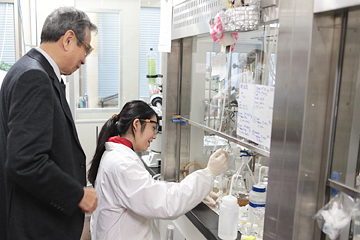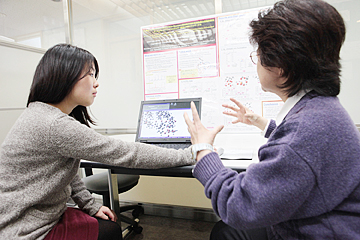Laboratory of polymer chemistry
1 | Synthesis of functional polymer and its molecular assembly and investigation of their property using fluorescence probe method
Polymers are very familiar materials in our daily life as plastic, fiber, rubber, and things. Our group studies functional polymers: (i) synthesis of stimuli-responsive polymers and (ii) investigations of the polymers and their molecular assemblies in aqueous solution using fluorescence probe method. Stimuli-responsive polymer is one of the most studied functional polymers and its characteristics are changed in response to external stimulus such as temperature, pH, light and so on. Fluorescence probe linked to polymer chain could report the stimuli-induced small change of polymer chain. Therefore, we design novel monomers and initiators with fluorescence probe and synthesize fluorescence probe-induced stimuli-responsive polymers. Moreover, in addition to linear polymer, polymers with different structure have been synthesized utilizing various monomers (Figure 1). As an example, fluorescence spectra of thermo-responsive linear polymer measured in aqueous solution are shown in Figure 2. Recently, stimuli-responsive polymers having biodegradable polymer and biopolymer as component are newly designed.
2 | Theoretical studies of fragmentation and ion-molecule reaction in the gas phase and applications for identifying microbial volatiles in the environments of cultural properties
We are studying the mechanism, kinetics and dynamics for unimolecular dissociation, ion-molecule and ion-surface reactions in gas-phase using mass spectrometry and ab initio calculations.
Our research focuses on constructing a theory for predicting mass spectra of phosphopeptides and glycopeptides (bioactive compounds) and organosilicons (functional materials).
Furthermore, we are also studying microbial volatile organic compounds (MVOCs) emitted from the soil-derived fungi for the purpose of preserving cultural properties. In order to identify these MVOCs, the fragmentation theory in mass spectra can be used. In order to identify fungi from these MVOCs, this laboratory has invented and constructed software for detecting and identifying fungal species by multivariate statistics of IMS-GC/MS data of MVOCs.
Fig. 1 Fragmentation mechanism of organosilicon ions.
Fig. 2 Development of software for detecting and identifying fungal species by multivariate statistics of IMS-GC/MS data of MVOCs for the purpose of preserving cultural properties. Sesquiterpenes in MVOCs showed a defined peak at a particular period which corresponds to right before spore reproduction. Takeuchi et al., Surf. Interface Anal., 2012.

